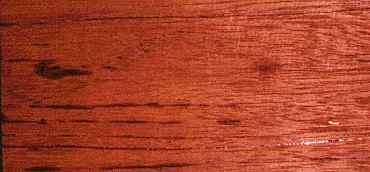
White Meranti (Shorea cochinchinensis)
Family: Dipterocarpaceae
Common names: Lun, Lun puteh, Melapi, White Meranti
Distributed in: Cambodia (Oceania and S.E. Asia)
Distribution overview: The geographical range of the White meranti group of Shorea spp. includes India in the north and west through the Malayan Peninsula to the Philippines and the Celebes in the east.
Common uses: Beams, Boat building, Building construction, Cabin construction, Canoes, Concrete formwork, Construction, Decks, Decorative plywood, Decorative veneer, Domestic flooring, Excelsior, Factory construction, Figured veneer, Flooring, Form work, Foundation posts, Framing, Heavy construction, Joinery, Joists, Lifeboats, Light construction, Parquet flooring, Plywood, Porch columns, Rough construction, Shipbuilding, Sub-flooring, Veneer
Product sources: Shorea spp. is a major timber source in international trade. The species are abundant, and supplies are plentiful, especially in the form of veneers. This popular wood is priced in the inexpensive range. Many species in the Shorea genera are also a source of other economically important non-timber products. Seeds of some species yield fat which is used in the manufacture of chocolate. Others produce nuts, the most common of which is the illipe nuts of commerce produced by S. gysbertisiana . The nuts yield a fat which is similar to cocoa-butter in some of its properties. Shorea trees are also tapped for oleo-resin, and typical dammar is obtained from S. wiesneri which grows in Java and Sumatra. The tree of S. robusta produces dammar which is used as a disinfectant and as incense in religious ceremonies in India. Other non-timber products from Shorea are reported to include tannin and fibers.
Environment profile: Status has not been officially assessed
Tree size: Trunk diameter is 150-200 cm
Colors: the heart isPink, Redand the sapwoodRed, Same color as heartwood .The grain isInterlocked, the textureModerately coarseand the lusterSlightly lustrous
Natural durability: Perishable, Susceptible to termite attack
Odor: No distinct odor or taste
Silica Content: Contains high levels of silica (> 0.5% of dry weight)
Kiln Schedules: T6-D4 (4/4)
Drying Defects: Distortion, May cup and stain during drying
Ease of Drying: Reconditioning Treatement
Comments: Produced by tress of Shorea species in the Anthoshorea group
Blunting Effect: Little
Boring: Fairly easy to very easy
Carving: Poor carving properties
Cutting Resistance: Tungsten-Tipped or stellite-tipped cutters and increased tooth pitch during sawing is recom.
Gluing: Fairly Easy to Very Easy
Mortising: Very Good to Excellent
Moulding: Responds poorly to ordinary to machine tools
Movement in Service: Responds poorly to ordinary to machine tools
Nailing: Pre-boring recommended, Tends to split during nailing
Planing: Poor machining properties due to severe and rapid dulling of cutting edges
Resistance to Impregnation: Resistant to very resistant to preservative treatment
Response to hand tools: Very difficult to work with hand tools
Routing recessing: Routs with difficult, with severe dulling of cutting edges
Sanding: Good sanding properties
Steam bending: Tends to Degrade
Screwing: Fairly Easy to Very Easy, Good screwing properties; Turning: Fairly Easy to Very Easy
Polishing: Surface Preparation; Staining: Surface Preparation; Varnishing: Improve with surface preparation
;
- Numerical data Metric
- Numerical data English
- Strength properties
- References
 |
 |
 |
 |
| Item |
Green |
Dry |
Metric |
| Specific Gravity |
0,47 |
0,64 |
|
| Density |
|
576 |
kg/m3 |
| Bending Strength |
675 |
950 |
kg/cm2 |
| Crushing Strength |
443 |
552 |
kg/cm2 |
| Hardness |
|
506 |
kg |
| Impact Strength |
|
|
cm |
| Shearing Strength |
|
106 |
kg/cm2 |
| Stiffness |
89 |
102 |
1000 kg/cm2 |
| Tangential Shrinkage |
6 |
|
% |
| Radial Shrinkage |
3 |
|
% |
| Weight |
785 |
592 |
kg/m3 |
| Maximum Load |
0,56 |
0,77 |
cm-kg/cm3 |
| Toughness |
|
|
cm-kg |
| Static Bending |
|
|
kg/cm2 |
|
 |  |  |  | | Item | Green | Dry | English | | Bending Strength | 9604 | 13524 | psi | | Density | | 36 | lbs/ft3 | | Hardness | | 1117 | lbs | | Maximum Crushing Strength | 6311 | 7860 | psi | | Shearing Strength | | 1509 | psi | | Stiffness | 1274 | 1460 | 1000 psi | | Work to Maximum Load | 8 | 11 | inch-lbs/in3 | | Specific Gravity | 0.47 | 0.64 | | | Weight | 49 | 37 | lbs/ft3 | | Radial Shrinkage | 3 | | % | | Tangential Shrinkage | 6 | | % | | Volumetric Shrinkage | 8 | | % | |
Resists wearing, denting and marring fairly well
Fairly hard
Density=High
Crushing strength = high
Compression strength (parallel to grain) = high
Bending strength in air-dried condition...is strong
Andy Poynter. 1993. Personal Communication.Arno, J. 1988. Shorea spp. - Luan. In A Guide to Useful Woods of the World. Flynn Jr., J.H., Editor. King Philip Publishing Co., Portland, Maine. 1994. Page 329-330.Chowdhury, K.A. and S.S. Ghosh. 1958. Indian Woods - Their Identification, Properties and Uses, Volume I - Dilleniaceae to Elaeocarpaceae. Published by the Manager of Publications, Delhi, India.Chudnoff, M.,1984,Tropical Timbers of the World,U.S.A. Department of Agriculture, Forest Service, Forest Products,Laboratory, Madison.HMSO.1972.Handbook of Hardwoods, 2nd Edition.Revised by R.H. Farmer.Department of the Environment, Building Research Establishment, Princes Risborough Laboratory, Her Majesty's Stationery Office, London.Lincoln, W.A. 1986. World Woods in Color. Linden Publishing Co. Inc., Fresno, California.USDA. 1987. Wood Handbook: Wood as an Engineering Material. Agriculture Handbook No. 72. United States Department of Agriculture, Forest Service, Madison, Wisconsin.
|








